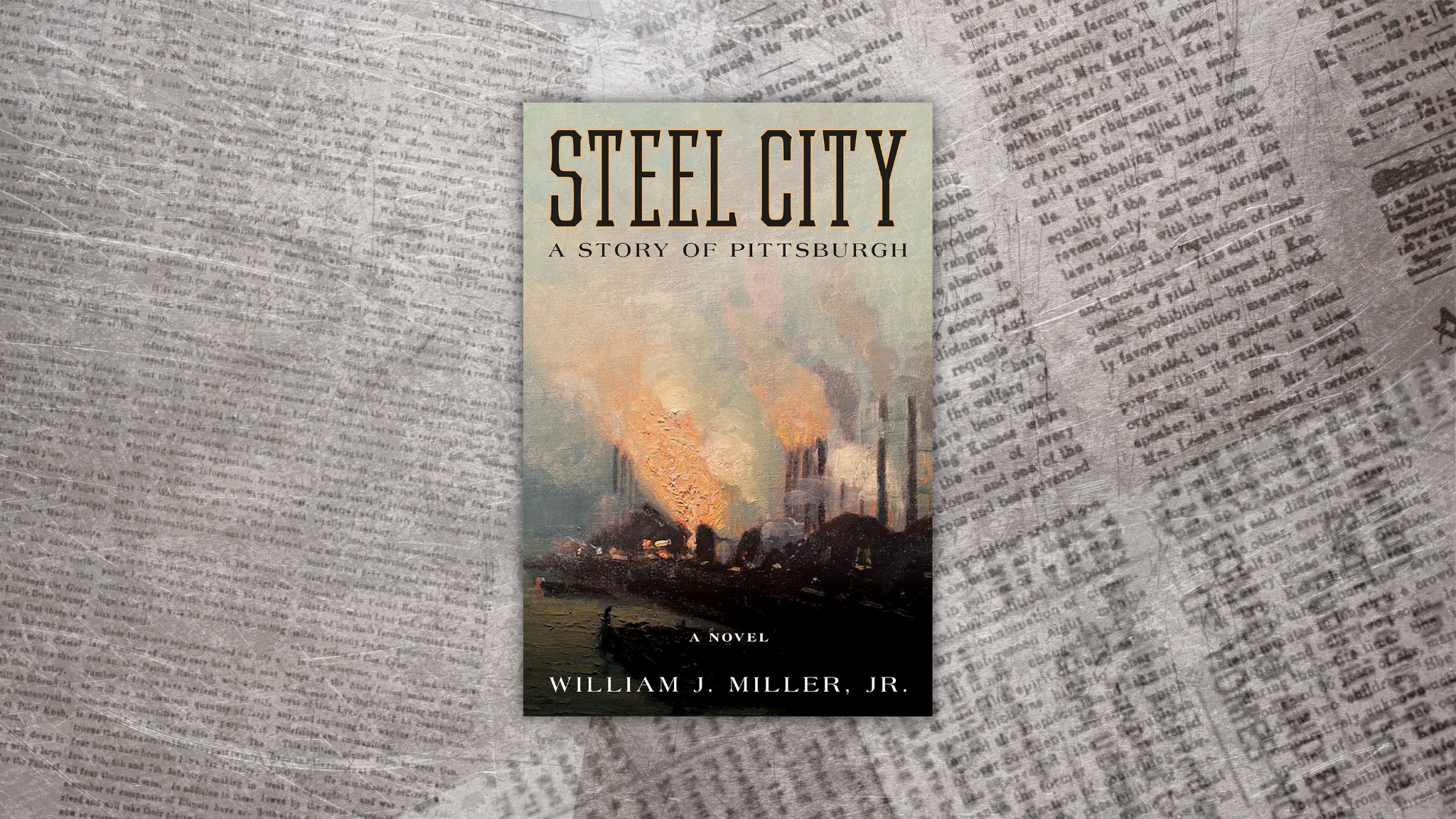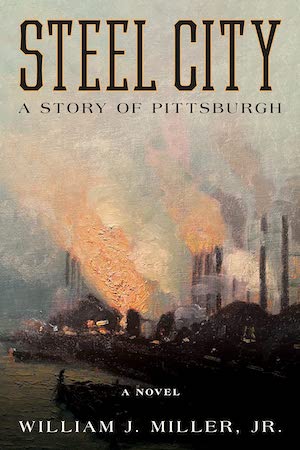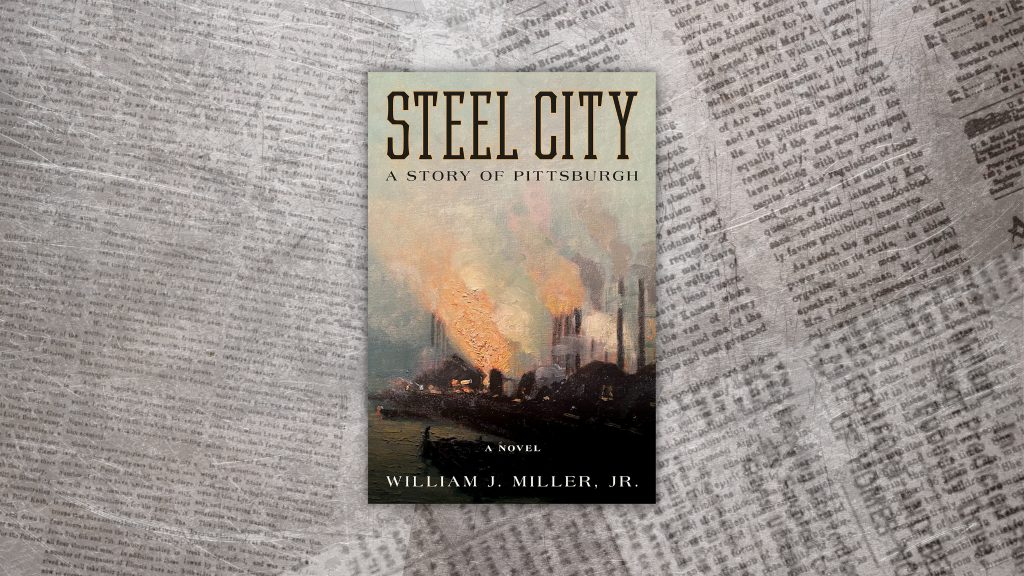
Steel City: A Story of Pittsburgh by William J. Miller, Jr.
Steel City (Lyons Press) enthralls readers of historical fiction from the first page with an immersive plot set in the industrial sprawl and black smoke of Pittsburgh in the 1890’s. The height of the American steel boom brought prestige and recognition to the city, which became the home and headquarters for several of the richest men in the world.
William J. Miller, Jr portrays the era brilliantly through the eyes of an idealistic young reporter, who covers an escalating series of man-made disasters and armed conflicts that devastate the working-class population. The powerful men who preside over the city won’t allow anything to compromise their profits, considering these tragedies to be “business as usual”. Readers of A Gentleman in Moscow and the 2022 bestseller Trust will appreciate the immersive plot, set in a historical context and told from multiple perspectives.
Jamie Dalton is an ambitious young man; son of a lawyer, born in Pittsburgh, educated at Yale, he lives a privileged and reckless life. He devotes himself to drinking and visiting brothels in New Haven until a football injury makes him rethink his life.
Jamie becomes enthralled by the truth and consequence of the newspaper business in the late 1800s and returns to his home, excited to report on the steel industry and the men who wield absolute power over the city. Torn between loyalty to his upper-class roots and a duty to expose hidden truths, Jamie leverages his family’s connections to gain access to the upper echelons of society. As he navigates the turmoil of multiple current events, Jamie learns how dependent the wealthy are on those who they employ, and how fiercely they will defend against any threat to their status.
The first major event that Jamie Dalton covers for the Pittsburgh Sun is the disastrous collapse of a nearby dam, resulting in the Johnstown flood. Dalton witnesses the pandemonium and carnage as a tremendous wall of water spills down the winding valley from South Fork Lake to Johnstown, decimating anyone and everything in its path.
“Townspeople tried to outrun the wave of water then one by one they all disappeared in the boiling froth.”
A few years later, Dalton is on the scene as Pittsburgh is engulfed and torn apart by labor disputes. Those on strike bargain for a living wage, while the men at the top assert that they have a duty to provide materials for the growing, expanding country at the lowest possible price; while still managing to amass the greatest personal fortunes that the world has ever seen.
The unions violently oppose efforts to bring in additional workers to replace them, but they are later repelled by deadly force. As reporter Jamie Dalton witnesses a bloody battle between the union worker and the Pinkerton forces called in to expel them, he remarks:
“I had witnessed the fury of nature in Johnstown, but the fury of men killing each other was more horrifying.”
The leaders of the labor unions are subsequently punished by law, while the murder of working men sanctioned by the industrialists is dismissed. For Dalton, this is a clear demonstration of exactly who controls the justice system.
Author William J. Miller, Jr. writes with the precision of an experienced researcher, and with the emotional depth of one who knows the subject first-hand. Miller grew up in Pittsburgh, surrounded by the buildings, landmarks and geographical features that he writes about. The monikers of Carnegie, Frick and other titans of the steel industry adorned the museums, concert halls and memorials that he visited as a child.
Through a career as a reporter, publisher, blogger and consumer marketing expert Miller has developed notable literary talent; particularly for generating vivid descriptions of setting and in representing multiple perspectives on each character portrayed in Steel City. This is Miller’s debut novel, but these pages feel like the familiar work of a veteran writer.
In addition to intriguing fictional elements, Steel City features biographical passages of several notable figures of the era. Henry Frick, Andrew Carnegie, Charles Schwab, James Pierpont Morgan, are portrayed as major characters throughout the novel. Even Henry Heinz, founder of the Heinz food company plays a significant role as another wealthy resident of the region. Miller’s representation of these historic figures is often critical, but far from biased.
The nefarious, greedy decisions of each man are balanced by their virtues of ingenuity, determination and patriotism. As Henry Frick and Carnegie cut wages and push for a twelve-hour workday on one page, they are shown as honorable fathers and husbands on the next.
The complexities of human nature are represented in these men; benevolence, loyalty, dedication to American values, are intermingled with greed, avarice, cunning and an unflinching instinct to trample anyone who threatens to compromise their profit margins. William J. Miller, Jr.’s characters, both fictional and historic, pump blood into the stone and steel structure of the city.

Publish Date: September 1, 2022
Genre: Historical Fiction
Author: William J. Miller, Jr.
Page Count: 320 pages
Publisher: Lyons Press
ISBN: 9781493068432

